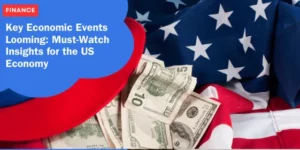Middle-Class Americans Face Growing Financial Strain

America’s middle class is feeling the brunt of high interest rates and persistent inflation, which continue to exacerbate financial challenges.
These economic pressures have become increasingly evident in the daily lives of middle-income households, whose income growth has lagged behind that of the upper class since 1970, according to a Pew Research Center report published on May 31.
This report defines middle-income households as those with incomes ranging from two-thirds to twice the US median household income, adjusted for household size.
Long-Term Squeeze and Cost-of-Living Crisis
The cost-of-living crisis has only intensified the long-term financial squeeze experienced by middle-class Americans.
Jennifer Jones Austin, co-chair of the National True Cost of Living Coalition, aptly captured this sentiment in a release, saying, “The economy is flourishing, but numerous Americans are struggling to stay afloat financially. They lack the financial flexibility to look beyond their immediate needs.”
Dialing Back Spending
There are clear indications that middle-class Americans are reducing their spending.
Fast food establishments, a staple for middle-income consumers, have increasingly introduced discounts to attract frustrated diners.
This move comes after many restaurants had raised their menu prices sharply in response to soaring inflation, betting that customers would still be willing to pay.
However, as inflation persisted, diners began to tighten their purse strings, resulting in decreased foot traffic and lower sales for fast food chains.
Retail Impact and Consumer Behavior
The financial strain on middle-class households has also been reflected in major retail reports.
In May, Target, which has a core customer base among the middle class, reported that sales at stores open for at least a year had dropped 3.7% during its latest quarter compared to the previous year.
This marked the fourth consecutive quarter of sales declines for the retailer.
Similarly, Kohl’s reported weak first-quarter results in the same month, underscoring how middle-income consumers are cutting back on spending on non-essential clothing and discretionary merchandise.
Kohl’s CEO, Thomas Kingsbury, mentioned during a call with analysts on May 30 that their customers are still facing challenges due to various economic factors, such as high interest rates and inflation.
“Our middle-income customer continues to be impacted.”
Economic Indicators and Consumer Financial Health
The broader economic data and corporate earnings reports reveal a bleak picture for lower-income consumers, who are struggling to pay their bills on time, reducing their spending, and actively seeking deals.
Meanwhile, wealthier Americans, who have largely supported the economy’s resilience through high interest rates, are also beginning to curb their purchases.
Rising Debt and Shrinking Savings
There are several indicators signaling that many consumers are facing financial hardship.
US home prices have reached record highs, contributing to financial strain. Meanwhile, Americans are accumulating increasing amounts of debt and depleting the savings they had built up during the height of the COVID-19 pandemic.
Additionally, thousands of corporate layoffs have left some Americans struggling to make ends meet, leading many to feel as though they are living in a recession despite official economic indicators.
Divergence Between Economic Perception and Reality
For months, Americans have been grappling with a disparity between how they feel about the economy and how it appears on paper.
Recent cooling economic data has started to bridge this gap, highlighting the underlying financial struggles experienced by many.
In April, US job growth slowed considerably, with only 175,000 positions added following several months of strong job reports.
Furthermore, activity in the US manufacturing sector continued to contract in May, and data released on Tuesday showed that the number of US job openings shrank for the second consecutive month in April, setting a new three-year low.
Upcoming Economic Reports
Wall Street will gain further insight into the state of the economy on Friday when the Bureau of Labor Statistics reports May payroll figures.
These figures will provide additional context to the ongoing economic narrative and may confirm or contradict recent trends.
Broader Implications and Future Prospects
Interest Rates and Inflation
The prolonged period of high interest rates and persistent inflation has placed significant pressure on middle-class budgets.
The Federal Reserve’s ongoing efforts to combat inflation through interest rate hikes have contributed to higher borrowing costs, affecting everything from mortgages to credit card debt.
This has squeezed household budgets even tighter, making it difficult for many middle-class families to save or invest for the future.
Housing Market Pressures
The surging costs in the housing market have further exacerbated financial strain for many middle-class households.
Homeownership, a traditional pillar of middle-class financial stability, has become increasingly unattainable due to rising home prices and higher mortgage rates.
For renters, the situation isn’t much better, with rental prices soaring in many markets, consuming a larger share of household income.
Job Market Volatility
The job market, though showing signs of strength in some sectors, has been marked by volatility and uncertainty.
The recent slowdown in job growth, coupled with layoffs in various industries, adds to the financial insecurity experienced by middle-class workers.
While some sectors continue to hire, the overall stability of employment remains a concern.
Coping Strategies and Potential Solutions
Financial Planning and Budgeting
For middle-class families, effective financial planning and budgeting have become essential tools to navigate these challenging times.
Households are increasingly seeking ways to cut discretionary spending, manage debt, and build emergency savings.
Utilizing budgeting apps and seeking financial advice can help families develop strategies to stretch their dollars further.
Community Support and Resources
Community support and access to resources can provide a safety net for families facing financial strain.
Local non-profits, community centers, and government programs offer assistance with food, housing, and utilities, helping families bridge gaps during tough economic periods.
Increasing awareness and access to these resources is crucial for supporting those in need.
Advocacy and Policy Change
Advocacy for policy changes that address the root causes of financial strain is another avenue for long-term improvement.
This includes pushing for legislation that supports affordable housing, healthcare, and education, as well as policies aimed at reducing income inequality.
Stronger consumer protections and financial literacy programs can also empower individuals to make more informed financial decisions.
Conclusion: Navigating Financial Uncertainty
In conclusion, middle-class Americans are navigating a landscape fraught with financial challenges due to persistent inflation, high interest rates, and rising costs of living.
The economic pressures are forcing many to adjust their spending habits, reconsider long-term financial plans, and seek new ways to manage their budgets.






